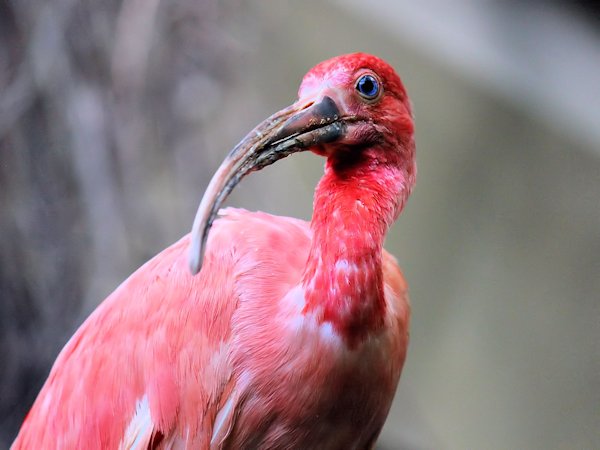Alerts
Please be advised that our bird aviaries are open!
Your Toronto Zoo is committed to the health and safety of the animals in our care. We take proactive steps to protect our birds from Avian Influenza which has been confirmed in a wild bird in southern Ontario, and some birds may still be off display.
Please note Splash Island is still closed and will not open until July due to unforeseen delays in construction. Please watch for updates on https://www.torontozoo.com/tz/splash or on our social media pages. Thank you!
Please note the following animals are currently not on display due to various reasons including Avian Bird Flu, and Covid-19 sensitivity:
- Flamingo, peacock, owl, bald eagle, and aviaries
- Some Kids Zoo Animals
- Cougar
- Moose
- Kangaroo walk through (kangaroos are still visible)
- Axolotl
We apologize for the inconvenience!


Bird
Location at the Zoo:
Americas
Region: Americas
Scarlet ibis
Eudocimus ruber has deep scarlet plumage, a long, downwards-curving dark bill, black eyes and long scarlet legs. Its wings are wide with black primaries. It stands 70 cm in height. While the males may be slightly larger, both sexes are very similar in appearance. Young birds are duller and have light brown to greyish white feathers.Conservation Status: IUCN

Distribution:
They range along the coasts of northern South America, also Trinidad (where it is the national bird) and Tobago. Occasionally they wander into Central America and have been introduced to southern U.S.A.Habitat:
The coastal areas of tropical rainforests, mud flats and wetlands, including mangrove swamps.Diet:
The scarlet ibis is mainly a carnivore eating fish, frogs, reptiles, and crustaceans. Soft fruit is also consumed.Reproduction:
Males use elaborate preening and flight displays to attract females. Breeding pairs will at times, intertwine their necks as part of the courtship rituals. The female lays one to three eggs, but normally two. The incubation period averages 23 days. Eggs are a pale bluish-green colour with brown markings. Both parents guard the nest. In the wild these birds can live up to fifteen years, and in captivity up to twenty.Adaptation:
Immature ibis are brown-white. As they mature, they develop their scarlet colour by eating crustaceans. Although they spend long periods of time in aquatic environments, their feet are only slightly webbed. Having separated toes allows them to perch in trees and to move through the mud more easily. The long curved beak is used to probe for food in muddy, shallow waters, guided mostly by touch. As well, scarlet ibis use their beaks for preening (cleaning) feathers.The scarlet ibis lives in large breeding colonies that can include thousands of individual birds. A social structure that favours high population density helps the birds keep watch for predators. In addition, large colonies provide ‘safety-in-numbers’ for both the birds and their eggs and hatchlings.